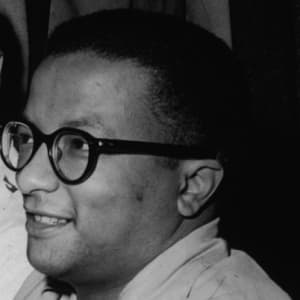
The Monster of Florence
The Monster of Florence was an Italian killer who targeted couples, shot them at close range and mutilated the sexual organs of the female victim.
Synopsis
The Monster of Florence was a killer who became notorious for his pattern; he always targeted amorous couples that were out alone, shot them at close range with a .22-caliber Beretta and mutilated the sexual organs of the female victim. The killer was responsible for 16 murders between 1968 and 1985. Four men have been arrested, but police suggest that the real killer has never been identified.
First Murder
The serial killer "Il Mostro di Firenze", or "The Monster of Florence," first surfaced in 1981 in Florence, Italy. The killer became notorious for his homicidal pattern; he always targeted amorous couples that were out alone, shot them at close range with a .22-caliber Beretta, and then mutilated the sexual organs of the female victim with a sharp knife.
Il Mostro committed a heinous crime on June 6, 1981, after the bodies of 30-year-old Giovanni Foggi and his fiancée, 21-year-old Carmela Di Nuccio, were found near their vehicle in the Scandicci area of Tuscany, Italy. The killer had shot Foggi and Di Nuccio with a .22-caliber Beretta while the couple was parked in their car near a local "lover's lane." He then stabbed them repeatedly. After they were both dead, the murderer pulled Di Nuccio's lifeless body approximately 30 feet from the car and carefully removed her reproductive organs with a serrated knife commonly used by S.C.U.B.A. divers. The near-surgical precision with which the genitals were cut from the victim's body suggested that the killer had a medical background.
Investigators initially suspected ambulance driver—and secret voyeur—Enzo Spalleti, whose car had been parked near the scene of the crime. As law enforcement officers probed Spaletti further, he gave vague, conflicting alibis. More evidence revealed that the suspect had told his wife about the incident before it had been announced in the paper. With this evidence, Spalleti was charged with two counts of homicide and sent to prison to stand trial. Several months later, however, a new murder led police to believe they had apprehended the wrong man
Investigation and Accusations
Investigators, still unable to find any new leads, began pursuing other possibilities. They investigated more than 100,000 people in hopes of gathering new evidence. Their questioning led to the doorstep of farmer Pietro Pacciani, a former rapist and murderer who had been arrested in 1951 for killing the man he had found sleeping with his fiancée. Pacciani had been released after serving 13 years for his crime, but investigators believed that the man was still committing murders. In a highly publicized 1994 trial, a judge and jury convicted Pacciani for 14 of the 16 counts of murder. But in 1996 an appeals court overturned the conviction, citing lack of evidence.
The police, now desperate to find the murderer or murderers, began developing a new theory. Acting on the belief that the killings were committed by a Satanic cult led by Pacciani, police concluded that two of Pacciani's friends Mario Vanni and Giancarlo Lotti were accomplices to the crimes. They were believed to have committed the murders in order to gain power from their victim's reproductive organs during bizarre cult rituals. Pacciani was held in prison for a retrial, and in 1997 Lotti and Vanni were convicted and sentenced to life in prison for the murders, with very little evidence to back the claims. Pacciani died of cardiac arrest in February 1998, before he was able to face his retrial. Lotti died in prison four years later.
Investigators made another move in the investigation in January of 2004, when they accused pharmacist Francesco Calamandrei of leading the Satanic cult they believed was responsible for the murders. For the next three years, police built a case against Calamandrei, as well Mario Spezi, a journalist who had been following the murders and was an outspoken critic of the police investigation. An outraged public, who believed the police had gone too far, protested the arrest. They alleged that prosecutors wanted to silence Spezi's criticisms, and pressured police into releasing Spezi. Spezi was eventually absolved of the crimes, and the group in charge of the Il Mostro investigation was dissolved in 2006. Prosecutors Giuliano Mignini and Michele Giuttari were also charged with abuse of office for their arrest of Spezi. In 2007, Calamandrei stood trial, but was acquitted of all charges due to lack of evidence. Two years later, Vanni died in a nursing home. Whether or not he participated in the crimes, or was falsely accused, remains a mystery.
In 2010, Mignini and Giuttari stood trial and were convicted of abuse of power. At the time, Mignini was prosecuting the high profile case of American student Amanda Knox, who was accused and later acquitted of murdering of her roommate Meredith Kercher. Mignini was given a 16-month suspended sentence, appealed his conviction, and was allowed to continue to serve as prosecutor. In 2011, a court of appeal in Florence overturned the abuse of power convictions and referred the case to a prosecutor in Turin. Giuttari was reinstated to the police force and became a best-selling crime author. Spezi also wrote a nonfiction book about the case in 1983, and co-authored The Monster of Florence: A True Story with American author Douglas Preston in 2008.
The identity of the Monster of Florence remains a mystery.




